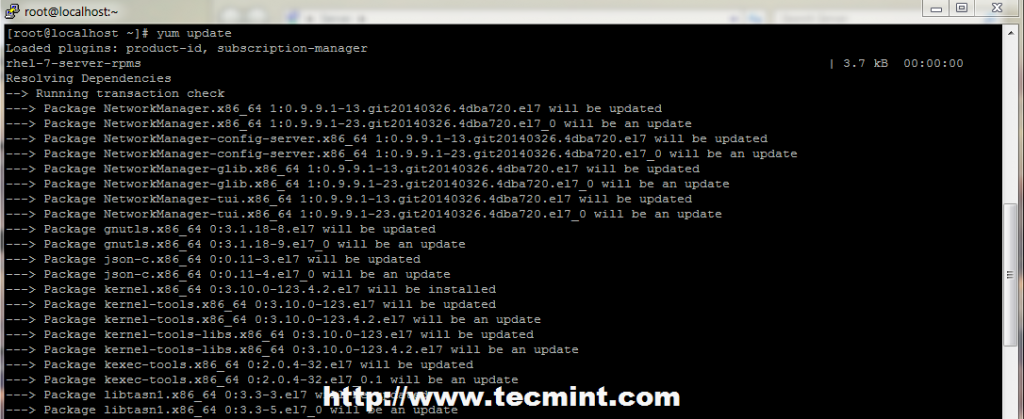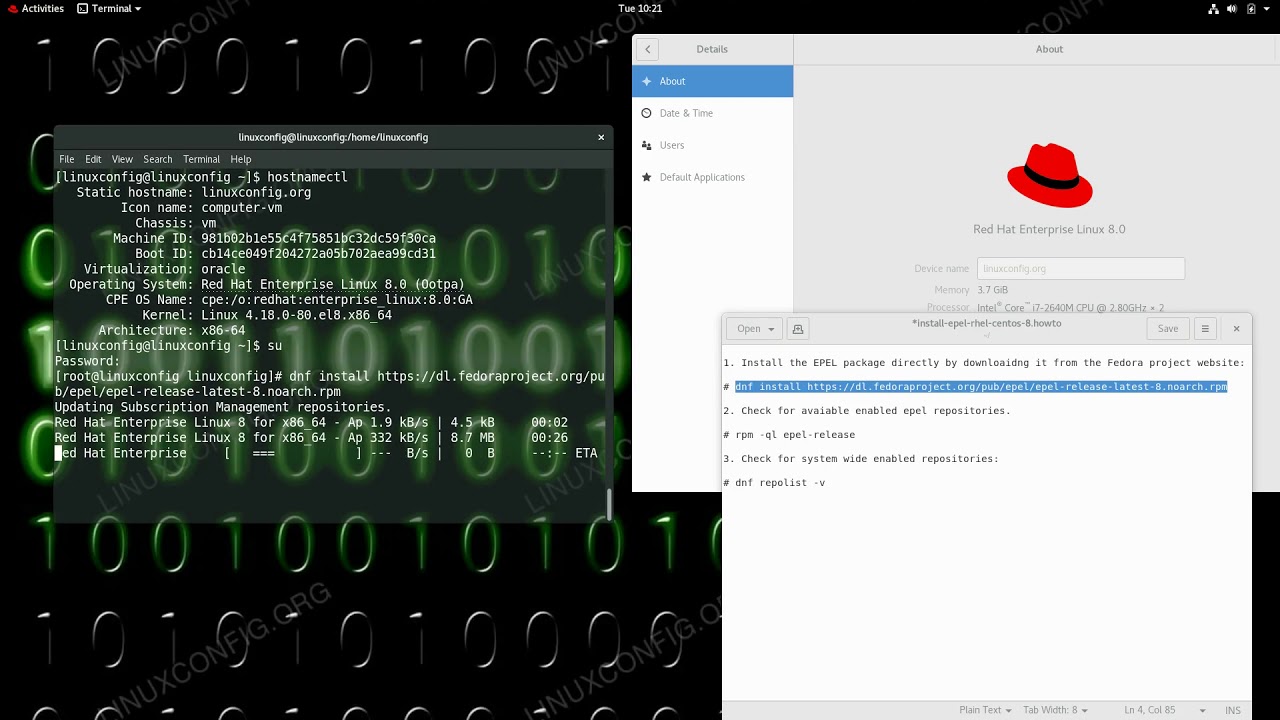
- #REDHAT REPOSITORY XSCREENSAVER HOW TO#
- #REDHAT REPOSITORY XSCREENSAVER INSTALL#
- #REDHAT REPOSITORY XSCREENSAVER ISO#
- #REDHAT REPOSITORY XSCREENSAVER DOWNLOAD#
- #REDHAT REPOSITORY XSCREENSAVER FREE#
#REDHAT REPOSITORY XSCREENSAVER INSTALL#
Note that the baseurl here points to Server Folder, assuming you also install software such as clusters and virtual machines, you also need to establish a baseurl pointing to Cluster, ClusterStorage, and VT. Gpgkey=file:///u01/software/rhel5/RPM-GPG-KEY-redhat-release # mv/etc//rhel-debuginfo.repo/etc//īaseurl=file:///u01/software/rhel5/Server ->Point to the configuration file of your warehouse: Edit the repo file, first remove or rename the original repo file, which is to make other repo files invalid and only use the local source Not a problem, install yum first, but it is usually installed by default.ĥ. Make sure that yum related software packages have been installed in the system.

# mount -t iso9660 -o loop/u01/software/iso//u01/software/rhel5įilesystem Size Used Avail Use% Mounted on
#REDHAT REPOSITORY XSCREENSAVER ISO#
Assuming it is a DVD disc (after inserting the server, it will automatically map under/dev/cdrom), then make the ISO file Create the ISO file storage folder (/u01/software/iso) and the ISO file mount folder (/u01/software/rhel5)Ĭonsider The ready-made ISO file can be directly uploaded to the/u01/software/iso folder.Ģ. LibXtst.so.6 es necesario por teamviewer-2-0.1. LibXrender.so.1 es necesario por teamviewer-2-0.i686 LibXrandr.so.2 es necesario por teamviewer-2-0.i686 LibXfixes.so.3 es necesario por teamviewer-2-0.i686 LibXext.so.6 es necesario por teamviewer-2-0.i686 LibXdamage.so.1 es necesario por teamviewer-2-0.i686 LibSM.so.6 es necesario por teamviewer-2-0.i686 Libjpeg.so.62 es necesario por teamviewer-2-0.i686 Libfreetype.so.6 es necesario por teamviewer-2-0.i686 Libfontconfig.so.1 es necesario por teamviewer-2-0.i686 Libasound.so.2 es necesario por teamviewer-2-0.i686 Summary: xscreensaver displays three dots for every char Keywords: Status: CLOSED ERRATA Alias: None Product: Fedora Classification: Fedora Component: xscreensaver Sub Component: Version: 34 Hardware: Unspecified OS: Unspecified Priority: unspecified Severity: high Target Milestone:- Assignee: Mamoru TASAKA. Libgcc_s.so.1 es necesario por teamviewer-2-0.i686 Downloads # rpm -Uvh teamviewer_linux.rpm.1 No se como levantar las dependencias en fedora para intalar teamviewer me salen estoas erroresġ4] Downloads # yum list “compat-libstdc++-33.i686” “compat-libstdc++-33.x86_64”Ĭomplementos cargados:copr, langpacks, priorities, refresh-updatesd, versionlockĤ2 packages excluded due to repository priority protectionsĬompat-libstdc++-33.i686 3.2.3-68.7 fedoraĬompat-libstdc++-33.x86_64 3.2.3-68.7 fedora Spread the knowledge, if this article found useful. In this tutorial, TeamViewer installation on various Linux distributions, including Ubuntu, Debian, Fedora, CentOS, RHEL and openSUSE has been detailed thoroughly. On openSUSE $ cat /etc/zypp/repos.d/teamviewer.repo On CentOS/RHEL/Fedora $ cat /etc//teamviewer.repo On Debian/Ubuntu $ cat /etc/apt//teamviewer.list Once Accepted, below screen will appear with “Your ID” and “Password” to connect with other users.ĭuring installation, TeamViewer adds repository to your system and any new updates relevant to TeamViewer will be automatically installed along with your system updates.īelow files contain details about the TeamViewer repository.
Additionally, the EPEL repository has to be enabled in order to satisfy the dependencies. Ability to run standalone or with xscreensaver added by Jamie Zawinski <>, 10-May-97.TeamViewer can only be installed with a Workstation or Server subscription.

Run the below commands to install TeamViewer on CentOS 8. $ sudo yum install epel-releaseįinally, Install the TeamViewer by running the following command. If it is not already enabled on your system, please use the below command to enable it. $ sudo rpm -import įew of the TeamViewer dependency packages are available in the EPEL repository. Import the TeamViewer public key prior installation, else it will prompt for missing key during installation of TeamViewer on RPM system, to verify the signature of the package.
#REDHAT REPOSITORY XSCREENSAVER DOWNLOAD#
TeamViewer is not included in the CentOS repositories hence TeamViewer RPM package can be installed by downloading from the official TeamViewer’s download page.

#REDHAT REPOSITORY XSCREENSAVER HOW TO#
It supports multiple Linux distributions and this article shows how to install TeamViewer on Ubuntu, Fedora, and Red Hat systems.

#REDHAT REPOSITORY XSCREENSAVER FREE#
TeamViewer is a proprietary computer application, which is free for Private and Non-Commercial use. It is used for remote access, remote control, remote support, web conferencing, desktop sharing and file transfer between computers. TeamViewer is a cross-platform application that enables an user to control remote computers over the internet or network.


 0 kommentar(er)
0 kommentar(er)
